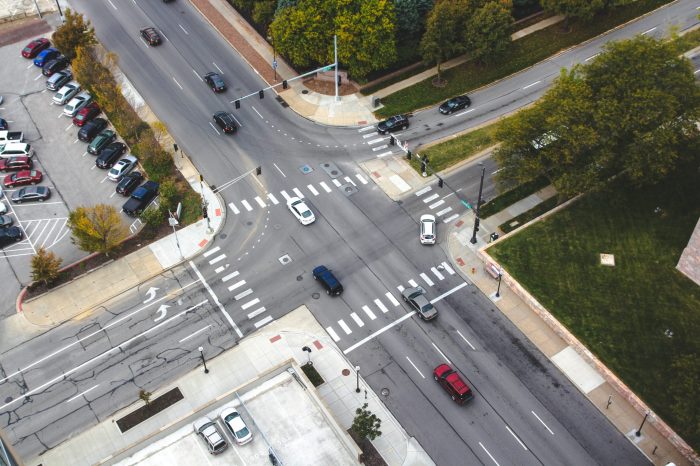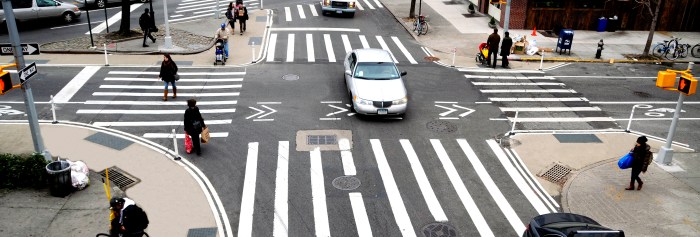Where do broadside collisions most commonly occur? This critical question takes center stage as we delve into the intricacies of this prevalent traffic hazard. From bustling intersections to poorly designed roadways, we unravel the underlying factors that contribute to these often-catastrophic events.
Our exploration begins by identifying the common locations where broadside collisions occur, supported by statistics and data. We then analyze the contributing factors at intersections, examining the role of driver visibility, traffic signals, and road design. The influence of driver behavior, including distracted driving, speeding, and fatigue, is also meticulously examined.
Where Do Broadside Collisions Most Commonly Occur?

Broadside collisions, also known as T-bone accidents, occur when the front of one vehicle collides with the side of another vehicle. These collisions can be particularly dangerous, as they often result in serious injuries or even fatalities. According to the National Highway Traffic Safety Administration (NHTSA), broadside collisions account for approximately 25% of all fatal crashes in the United States.
Identify Common Locations Where Broadside Collisions Occur
Broadside collisions are most common at intersections. This is because intersections are often busy and congested, which can make it difficult for drivers to see oncoming traffic. Additionally, intersections often have blind spots, which can make it difficult for drivers to see vehicles that are approaching from the side.
Other common locations for broadside collisions include:
- Parking lots
- Driveways
- Roundabouts
- Narrow roads
These locations are often busy and congested, which can make it difficult for drivers to see oncoming traffic. Additionally, these locations often have blind spots, which can make it difficult for drivers to see vehicles that are approaching from the side.
Analyze Contributing Factors to Broadside Collisions at Intersections
There are a number of factors that can contribute to broadside collisions at intersections. These factors include:
- Driver visibility: Intersections can be busy and congested, which can make it difficult for drivers to see oncoming traffic. Additionally, intersections often have blind spots, which can make it difficult for drivers to see vehicles that are approaching from the side.
- Traffic signals: Traffic signals can help to reduce the risk of broadside collisions by controlling the flow of traffic. However, traffic signals can also be a contributing factor to broadside collisions if they are not properly timed or if drivers fail to obey them.
- Road design and infrastructure: The design of the road and the infrastructure at intersections can also contribute to the risk of broadside collisions. For example, intersections with narrow lanes or limited visibility can increase the risk of broadside collisions.
Examine the Influence of Driver Behavior on Broadside Collisions
Driver behavior can also play a role in broadside collisions. Some of the driver behaviors that can increase the risk of broadside collisions include:
- Distracted driving: Distracted driving, such as cell phone use or texting, can take a driver’s attention away from the road and make it difficult for them to see oncoming traffic.
- Speeding: Speeding can increase the severity of a broadside collision and make it more likely to result in serious injuries or fatalities.
- Aggressive driving: Aggressive driving, such as tailgating or running red lights, can increase the risk of a broadside collision by making it more difficult for drivers to avoid other vehicles.
- Driver fatigue: Driver fatigue can slow a driver’s reaction time and make it difficult for them to see oncoming traffic.
- Driver impairment: Driver impairment, such as alcohol or drug use, can impair a driver’s judgment and make it difficult for them to operate a vehicle safely.
Provide Recommendations for Reducing Broadside Collisions, Where do broadside collisions most commonly occur
There are a number of things that can be done to reduce the risk of broadside collisions. These include:
- Improving road design and infrastructure: The design of the road and the infrastructure at intersections can be improved to reduce the risk of broadside collisions. For example, intersections can be widened, blind spots can be eliminated, and traffic signals can be timed to improve the flow of traffic.
- Educating drivers about the risks of broadside collisions: Drivers need to be educated about the risks of broadside collisions and the importance of safe driving practices. This education can be provided through driver education programs, public awareness campaigns, and law enforcement efforts.
- Enforcing traffic laws: Law enforcement can help to reduce the risk of broadside collisions by enforcing traffic laws, such as speed limits and red light laws. Law enforcement can also crack down on distracted driving and other dangerous driving behaviors.
Common Queries: Where Do Broadside Collisions Most Commonly Occur
What are the most common locations for broadside collisions?
Broadside collisions frequently occur at intersections, particularly those with limited visibility or poorly timed traffic signals.
How does driver behavior contribute to broadside collisions?
Distracted driving, speeding, and aggressive driving significantly increase the risk of broadside collisions.
What role does road design play in broadside collisions?
Poor road design, such as inadequate visibility, blind spots, and lack of proper signage, can contribute to broadside collisions.

